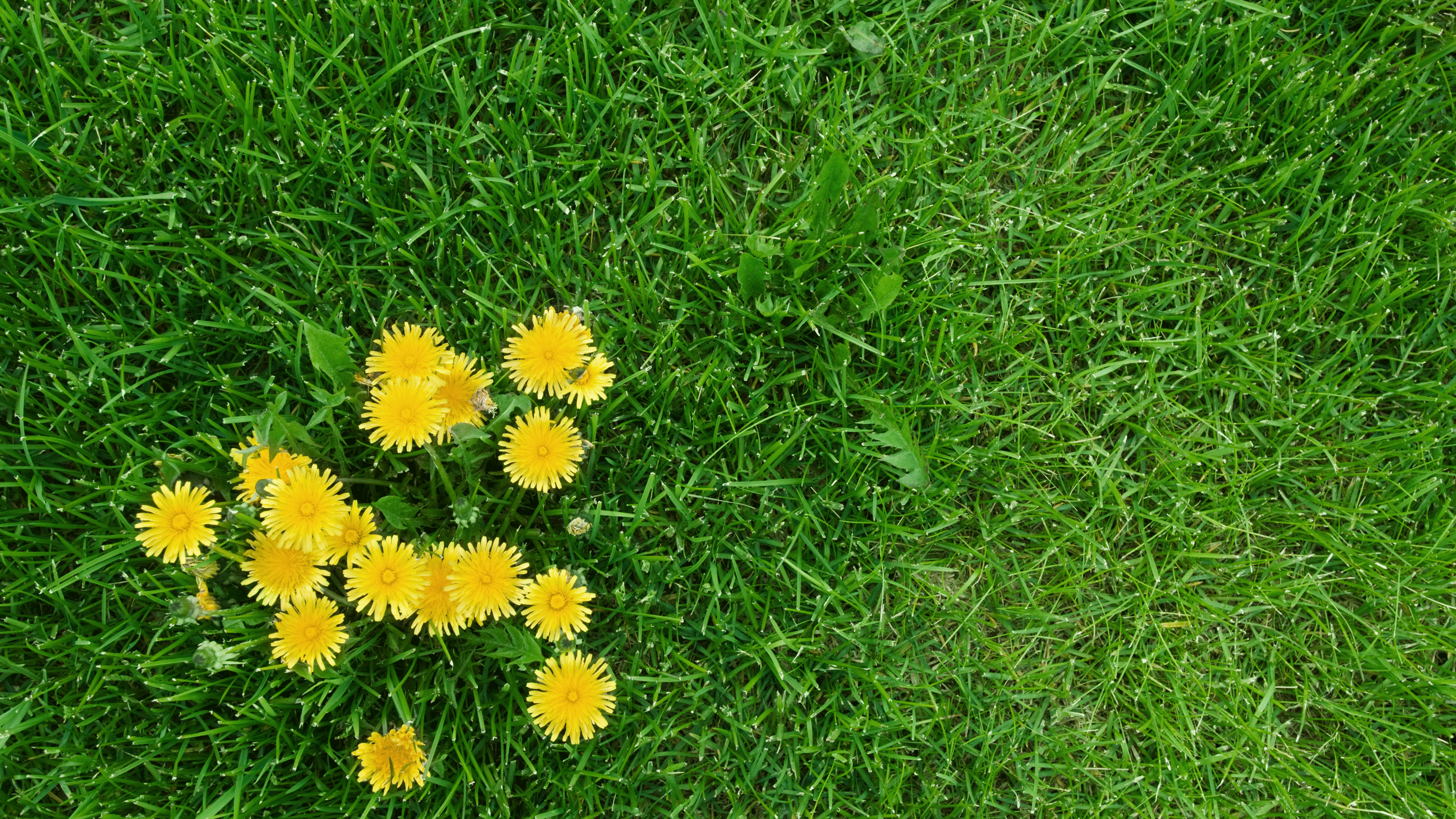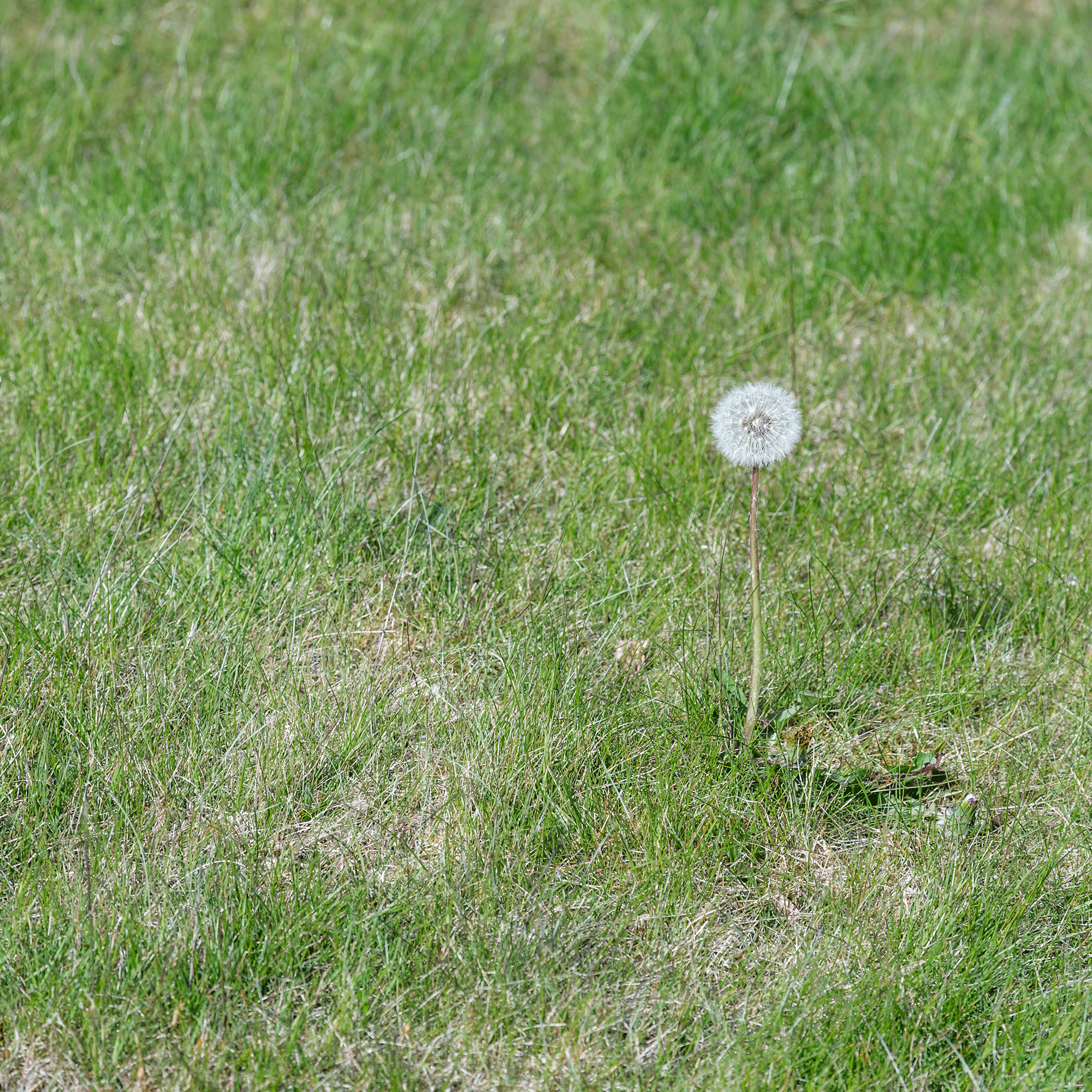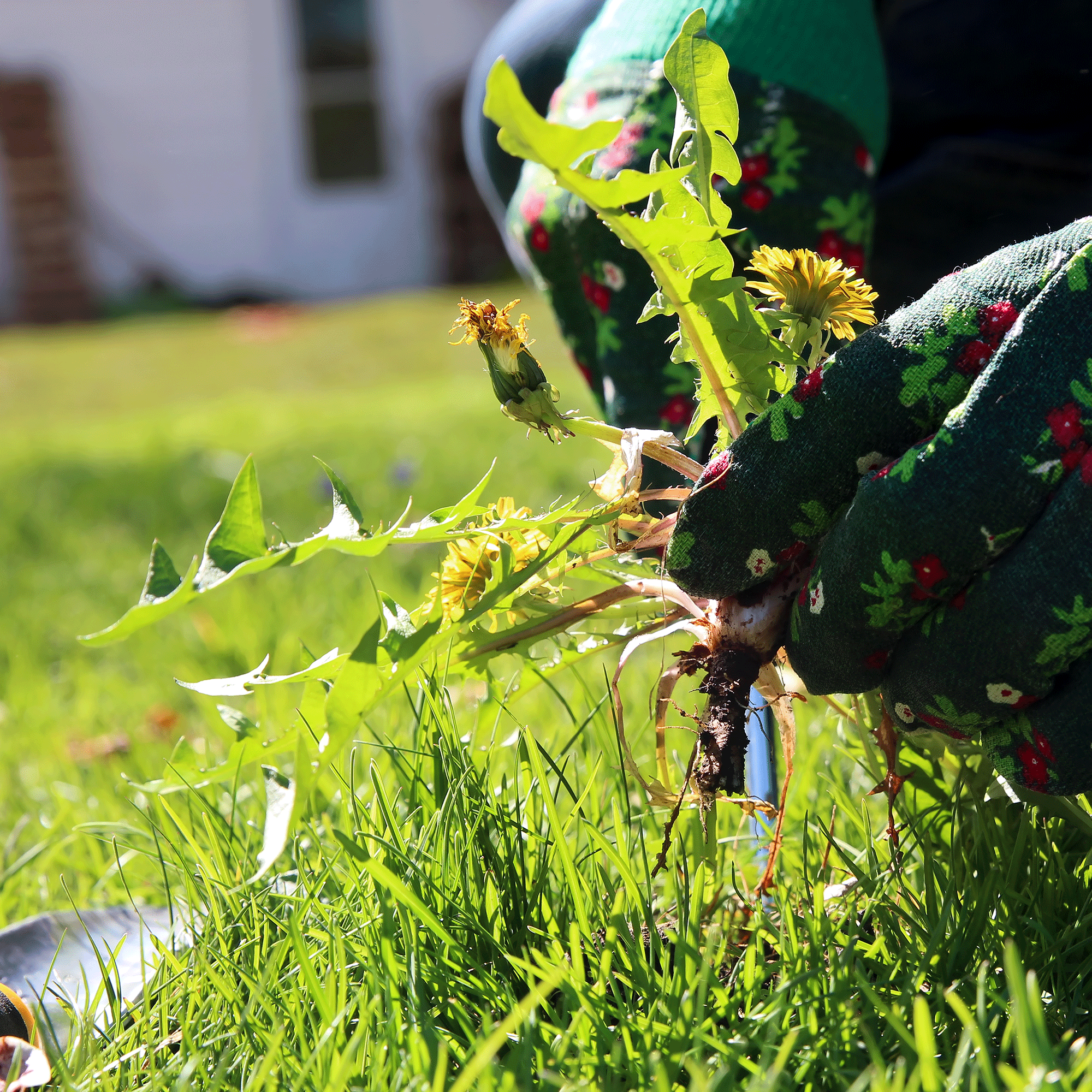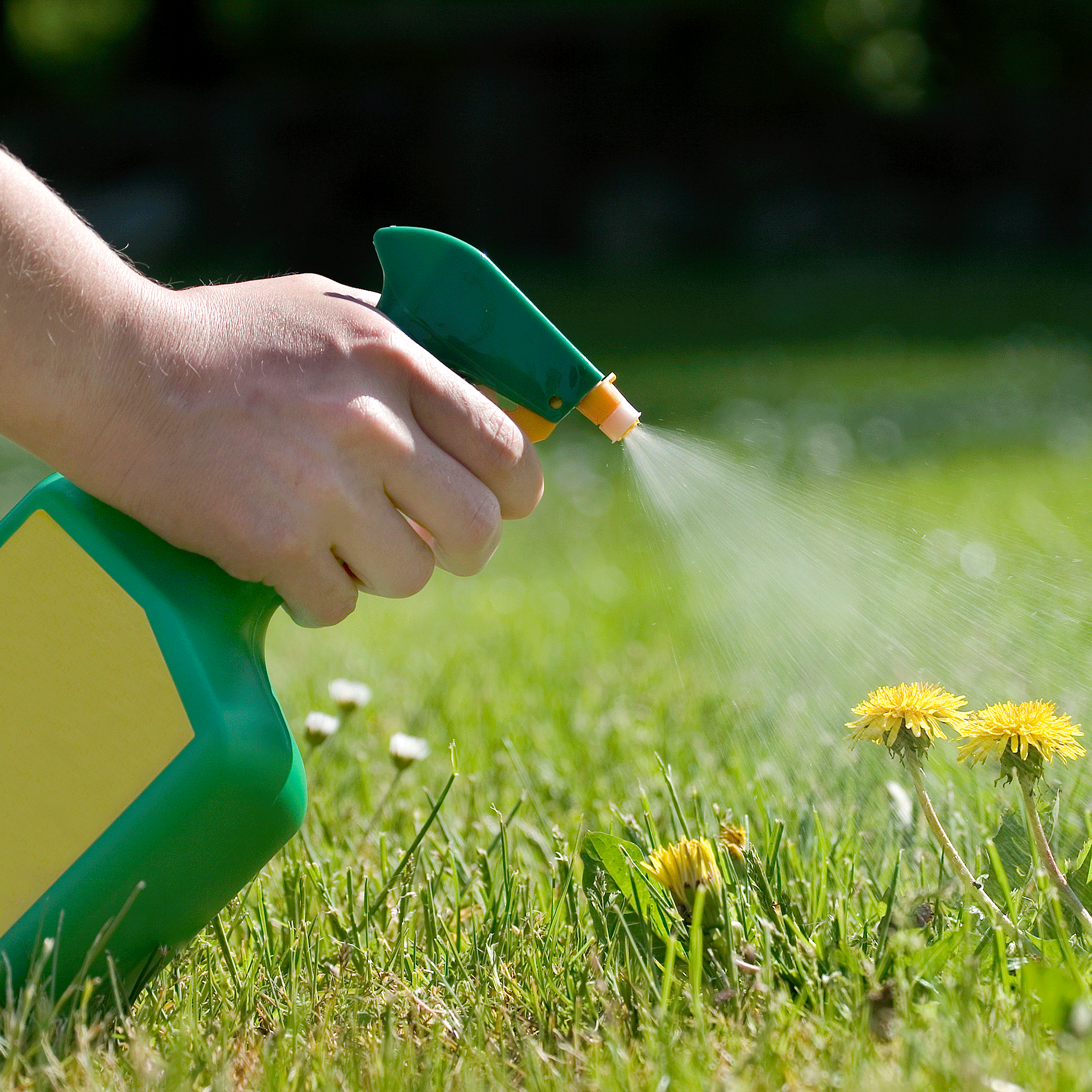How do I get rid of dandelions in my lawn? The only way to get rid of them for good
Garden experts reveal the best tried and tested methods to get rid of dandelions in a lawn for good


How to get rid of dandelions in a lawn can be tricky, but most garden experts agree that there is only one guaranteed method for how to kill the weed and stop them from coming back for good - digging them out.
'The best way to deal with dandelions is to dig them out using a hand fork, ensuring they are removed from the root, so they won’t return. Remember to wear gloves to protect your hands from any stings or scratches,' says Paul Hicks, Marketing & Product Manager at STIHL GB.
However, aside from digging out each dandelion in your lawn being a time-consuming task, before you start ridding your lawn of dandelions consider how bad the problem actually is. According to the RHS, dandelions are a welcome source of pollen to many insects and can form a key part of a tapestry lawn or wildlife garden idea. If you don't mind the yellow blooms we would recommend leaving them in place to help encourage rewilding and support insects and bees.

Dandelions start to flower in March and will continue right through until October, which is why you will have seen an increasing number invading your lawn at this time of year. If the problem is so persistent that your lawn ideas look more like a yellow flowerbed than an actual lawn you cantake action by digging up each dandelion.
How to get rid of dandelions in a lawn
The reason it is so tricky to get rid of dandelions in a lawn is for three key reasons:
- They're perennial plants so will come back year after year
- They can regrow from just a fragment of their long taproot
- They readily self-seed with masses of airborne seeds
It is for this very reason that most gardening experts, including the RHS recommend removing dandelions from a lawn by digging out isolated plants. The method is more time-consuming than other weed-killing hacks, or using weed killer. However, it is the safest and most effective way to get your dandelion problem under control.
What you'll need
- Gloves
- Hand fork or weed puller such as the WOLF-Garten’s multi-change Weed Extractor
- A fast-growing grass seed such as Ryeseed
- Garden hose with multi sprayer head such as the Gardena Multi-Sprayer
Step-by-step
1. Dig up the soil around the dandelion
The best time to tackle digging up dandelions in your lawn is in early spring so you are able to get the seedlings early. Simply pulling the dandelion out by the head won't remove it for long, as it will just grow back.
Get the Ideal Home Newsletter
Sign up to our newsletter for style and decor inspiration, house makeovers, project advice and more.
Instead, start by loosening the earth by watering it and carefully digging up the area around the weed to make sure you can access and remove the whole root. You can do this carefully with a hand fork or you can invest in a weed puller to make the job a bit quicker and save you bending down.
'Although time-consuming, the most effective way of removing dandelions from a lawn is to dig them up by hand. Use a tool such as WOLF-Garten’s multi-change Weed Extractor (available on Amazon) to cause the least damage to the lawn surrounding the weed and ensure you remove the entire taproot of the plant, which can run deep,' recommends Mark Hewett, Sales Manager at Wilkinson Sword Garden Tools.

2. Remove the whole tap root
Now this is where things get tricky when learning how to properly get rid of a dandelion weed. The taproot is an amalgamation of all the smaller roots, so it is very long, and leaving behind the tiniest fragment can cause the dandelion to grow back.
However, it is large enough to grasp, if you pick the dandelion out at the base with the root at the same time. If you find the root is not coming away easily, you might need to use a garden fork to make another incision in the lawn to help you wriggle it out.
The root should be directly underneath the plant, but if the dandelion has grown at an awkward angle you might need to try a couple more times before removing the whole root successfully.
If you are using a weed remover tool Mark Hewett says to 'simply push the tool into the ground, turn clockwise around the weed and pull out the entire root.'
'The depth of the root means that you are unlikely to be able to kill every dandelion in your garden at once, but taking care of the job every few weeks should ensure a weed-free lawn,' he adds.
3. Dispose of the dandelion
The last thing you want is your dandelion growing back in another part of your garden after removing it. So after pulling it up place it safely in a bucket or similar and transfer it to either a garden waste bin.
Dandelions can be composted, but this needs to be done with alot of care and you will still need to avoid the roots so we'd recommend playing it safe and getting rid of them completely.

4. Reseed the area
Now you have a dandelion-free lawn, fill in any new bare spots with a fast-growing grass seed such as ryeseed and give them a good water to get them started off.
FAQs
Why is my lawn full of dandelions?
Dandelions spread quickly via their seed clock heads, and will easily take root in your lawn if you don't care for it properly. 'A good lawn care regime of scarifying, aerating and mowing will prevent any dandelions and have lawns thriving,' says Peter Chaloner, managing director of gardening company Cobra.
'Regular mowing will stop the dandelions from growing and following the ‘one-third rule’ of only removing one-third of the grass blade height each time will keep lawns healthy.
'Cutting more than this weakens the plant and creates a shallow root system that will cause more problems in the future. Make sure you attach the grass bag as well to catch the cuttings and seeds and stop the dandelion seeds from spreading further!'

What will kill dandelions but not the grass?
The best way to kill dandelions but not the grass is to follow our method of digging them up. However, if the problem has gone too far that you need to use a selective weedkiller that will tackle the dandelion but leave the lawn unscathed. The RHS recommends using one or two applications of a weedkiller containing 2,4-D, dicamba, clopyralid or fluroxypyr. These can be found in Doff Lawn Weedkiller, Vitax Lawn Clear 2, Westland Resolva Lawn Weedkiller Extra or Weedol Lawn Weedkiller.
However, you will need to be careful not to add any clippings from the first lawn treatment to your compost as they will contaminate it. Instead, it is best not to collect the clippings at all and leave them on the surface of the grass.

Rebecca Knight has been the Deputy Editor on the Ideal Home Website since 2022. She graduated with a Masters degree in magazine journalism from City, University of London in 2018, before starting her journalism career as a staff writer on women's weekly magazines. She fell into the world of homes and interiors after joining the Ideal Home website team in 2019 as a Digital Writer. In 2020 she moved into position of Homes News Editor working across Homes & Gardens, LivingEtc, Real Homes, Gardeningetc and Ideal Home covering everything from the latest viral cleaning hack to the next big interior trend.
-
 Should your front door colour match your hallway? Interior experts reveal 3 reasons why it should (and 3 reasons it shouldn't)
Should your front door colour match your hallway? Interior experts reveal 3 reasons why it should (and 3 reasons it shouldn't)Are you team matching or contrasting?
By Ellis Cochrane
-
 This £200 limited-time discount makes this Dyson vacuum cheaper than I’ve ever seen it - run don’t walk to Argos for this bargain
This £200 limited-time discount makes this Dyson vacuum cheaper than I’ve ever seen it - run don’t walk to Argos for this bargainIt's the most affordable Dyson on the market right now
By Lauren Bradbury
-
 Martin and Shirlie Kemp’s pastel flower beds has given their Victorian renovation a romantic look - how you can get the look
Martin and Shirlie Kemp’s pastel flower beds has given their Victorian renovation a romantic look - how you can get the lookTheir pastel garden is the cottage garden inspo you've been looking for
By Kezia Reynolds